Melvin Blaine Hays, age 31, from Seattle, Washington, King county.
Service era: Korea
Date of death: Tuesday, October 23, 1951
Death details: On October 23, 1951, a B-29A Superfortress (tail number 44-94045, call sign “Able 1”) departed Kadena Air Base, Japan, carrying thirteen crew members on a bombing mission targeting Namsi Air Field in northwest North Korea. “Able 1” flew as a part of a strike force that included ten B-29s with fighter support. As the formation approached the target, it was attacked by anti-aircraft artillery fire and MiG-15 fighters. Just after “Able 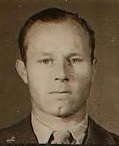 1″ completed its bombing run, it was hit in the right wing fuel tank, causing an explosion with a large amount of smoke. The damaged aircraft was flying under control but was losing altitude, and it eventually crashed on a mud flat near the island of Sinmi-Do. Initial searches that continued until October 26, failed to locate the missing Superfortress or its crew. On October 29, a United Nations Partisan Infantry Korea (UNPIK) team discovered the aircraft’s wreckage along with the remains of the radio operator and navigator, but the increasing enemy activity and the rising tide in the area prevented further recovery efforts that day. Returning the next day, UNPIK discovered that one set of these remains had washed away. However, the team collected another body, which they removed for temporary burial on the island of Oesun-Do. In early November 1951, the remains of a third body that was believed to be the radar operator washed ashore on Ho-Do where it was buried by UNPIK forces. Attempts to locate the Oesun-Do an Ho-Do burial sites or recovery of any of the other missing crew remains from the crash site, have been unsuccessful following the war. Airman Second Class Melvin Blaine Hays entered the U.S. Air Force from Washington and was assigned to the 371st Bombardment Squadron, 307th Bombardment Wing. He was the center fire control gunner aboard this Superfortress when it was lost. No returning POWs mentioned contact with A1C Hayes, nor was he seen at any known holding point, interrogation center, hospital, or permanent POW camp. He remains unaccounted-for. Today, Airman Second Class Hays is memorialized on the Courts of the Missing at the National Memorial Cemetery of the Pacific.
1″ completed its bombing run, it was hit in the right wing fuel tank, causing an explosion with a large amount of smoke. The damaged aircraft was flying under control but was losing altitude, and it eventually crashed on a mud flat near the island of Sinmi-Do. Initial searches that continued until October 26, failed to locate the missing Superfortress or its crew. On October 29, a United Nations Partisan Infantry Korea (UNPIK) team discovered the aircraft’s wreckage along with the remains of the radio operator and navigator, but the increasing enemy activity and the rising tide in the area prevented further recovery efforts that day. Returning the next day, UNPIK discovered that one set of these remains had washed away. However, the team collected another body, which they removed for temporary burial on the island of Oesun-Do. In early November 1951, the remains of a third body that was believed to be the radar operator washed ashore on Ho-Do where it was buried by UNPIK forces. Attempts to locate the Oesun-Do an Ho-Do burial sites or recovery of any of the other missing crew remains from the crash site, have been unsuccessful following the war. Airman Second Class Melvin Blaine Hays entered the U.S. Air Force from Washington and was assigned to the 371st Bombardment Squadron, 307th Bombardment Wing. He was the center fire control gunner aboard this Superfortress when it was lost. No returning POWs mentioned contact with A1C Hayes, nor was he seen at any known holding point, interrogation center, hospital, or permanent POW camp. He remains unaccounted-for. Today, Airman Second Class Hays is memorialized on the Courts of the Missing at the National Memorial Cemetery of the Pacific.
Source: National Archives, Defense POW/MIA Accounting Agency

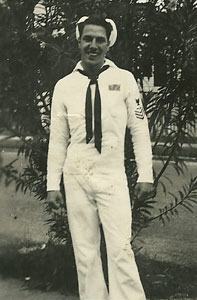 1″ completed its bombing run, it was hit in the right wing fuel tank, causing an explosion with a large amount of smoke. The damaged aircraft was flying under control but was losing altitude, and it eventually crashed on a mud flat near the island of Sinmi-Do. Initial searches that continued until October 26, failed to locate the missing Superfortress or its crew. On October 29, a United Nations Partisan Infantry Korea (UNPIK) team discovered the aircraft’s wreckage along with the remains of the radio operator and navigator, but the increasing enemy activity and the rising tide in the area prevented further recovery efforts that day. Returning the next day, UNPIK discovered that one set of these remains had washed away. However, the team collected another body, which they removed for temporary burial on the island of Oesun-Do. In early November 1951, the remains of a third body that was believed to be the radar operator washed ashore on Ho-Do where it was buried by UNPIK forces. Attempts to locate the Oesun-Do an Ho-Do burial sites or recovery of any of the other missing crew remains from the crash site, have been unsuccessful following the war. First Lieutenant John Joseph Horner entered the U.S. Air Force from New Jersey and served with the 371st Bombardment Squadron, 307th Bombardment Wing. He was the pilot of this Superfortress when it was lost. No returning POWs mentioned contact with 1st Lt Horner, nor was he seen at any known holding point, interrogation center, hospital, or permanent POW camp. Today, First Lieutenant Horner is memorialized on the Courts of the Missing at the National Memorial Cemetery of the Pacific.
1″ completed its bombing run, it was hit in the right wing fuel tank, causing an explosion with a large amount of smoke. The damaged aircraft was flying under control but was losing altitude, and it eventually crashed on a mud flat near the island of Sinmi-Do. Initial searches that continued until October 26, failed to locate the missing Superfortress or its crew. On October 29, a United Nations Partisan Infantry Korea (UNPIK) team discovered the aircraft’s wreckage along with the remains of the radio operator and navigator, but the increasing enemy activity and the rising tide in the area prevented further recovery efforts that day. Returning the next day, UNPIK discovered that one set of these remains had washed away. However, the team collected another body, which they removed for temporary burial on the island of Oesun-Do. In early November 1951, the remains of a third body that was believed to be the radar operator washed ashore on Ho-Do where it was buried by UNPIK forces. Attempts to locate the Oesun-Do an Ho-Do burial sites or recovery of any of the other missing crew remains from the crash site, have been unsuccessful following the war. First Lieutenant John Joseph Horner entered the U.S. Air Force from New Jersey and served with the 371st Bombardment Squadron, 307th Bombardment Wing. He was the pilot of this Superfortress when it was lost. No returning POWs mentioned contact with 1st Lt Horner, nor was he seen at any known holding point, interrogation center, hospital, or permanent POW camp. Today, First Lieutenant Horner is memorialized on the Courts of the Missing at the National Memorial Cemetery of the Pacific.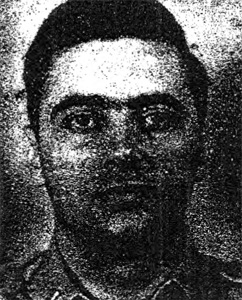 1″ completed its bombing run, it was hit in the right wing fuel tank, causing an explosion with a large amount of smoke. The damaged aircraft was flying under control but was losing altitude, and it eventually crashed on a mud flat near the island of Sinmi-Do. Initial searches that continued until October 26, failed to locate the missing Superfortress or its crew. On October 29, a United Nations Partisan Infantry Korea (UNPIK) team discovered the aircraft’s wreckage along with the remains of the radio operator and navigator, but the increasing enemy activity and the rising tide in the area prevented further recovery efforts that day. Returning the next day, UNPIK discovered that one set of these remains had washed away. However, the team collected another body, which they removed for temporary burial on the island of Oesun-Do. In early November 1951, the remains of a third body that was believed to be the radar operator washed ashore on Ho-Do where it was buried by UNPIK forces. Attempts to locate the Oesun-Do an Ho-Do burial sites or recovery of any of the other missing crew remains from the crash site, have been unsuccessful following the war. First Lieutenant Laurence Harold Hudson entered the U.S. Air Force from New York and served with the 371st Bombardment Squadron, 307th Bombardment Wing. He was the visual/radar observer aboard this Superfortress when it crashed, and he did not survive. No remains that have been recovered have been associated with 1st Lt Hudson, and he is still unaccounted-for. Today, First Lieutenant Hudson is memorialized on the Courts of the Missing at the National Memorial Cemetery of the Pacific.
1″ completed its bombing run, it was hit in the right wing fuel tank, causing an explosion with a large amount of smoke. The damaged aircraft was flying under control but was losing altitude, and it eventually crashed on a mud flat near the island of Sinmi-Do. Initial searches that continued until October 26, failed to locate the missing Superfortress or its crew. On October 29, a United Nations Partisan Infantry Korea (UNPIK) team discovered the aircraft’s wreckage along with the remains of the radio operator and navigator, but the increasing enemy activity and the rising tide in the area prevented further recovery efforts that day. Returning the next day, UNPIK discovered that one set of these remains had washed away. However, the team collected another body, which they removed for temporary burial on the island of Oesun-Do. In early November 1951, the remains of a third body that was believed to be the radar operator washed ashore on Ho-Do where it was buried by UNPIK forces. Attempts to locate the Oesun-Do an Ho-Do burial sites or recovery of any of the other missing crew remains from the crash site, have been unsuccessful following the war. First Lieutenant Laurence Harold Hudson entered the U.S. Air Force from New York and served with the 371st Bombardment Squadron, 307th Bombardment Wing. He was the visual/radar observer aboard this Superfortress when it crashed, and he did not survive. No remains that have been recovered have been associated with 1st Lt Hudson, and he is still unaccounted-for. Today, First Lieutenant Hudson is memorialized on the Courts of the Missing at the National Memorial Cemetery of the Pacific. 1″ completed its bombing run, it was hit in the right wing fuel tank, causing an explosion with a large amount of smoke. The damaged aircraft was flying under control but was losing altitude, and it eventually crashed on a mud flat near the island of Sinmi-Do. Initial searches that continued until October 26, failed to locate the missing Superfortress or its crew. On October 29, a United Nations Partisan Infantry Korea (UNPIK) team discovered the aircraft’s wreckage along with the remains of the radio operator and navigator, but the increasing enemy activity and the rising tide in the area prevented further recovery efforts that day. Returning the next day, UNPIK discovered that one set of these remains had washed away. However, the team collected another body, which they removed for temporary burial on the island of Oesun-Do. In early November 1951, the remains of a third body that was believed to be the radar operator washed ashore on Ho-Do where it was buried by UNPIK forces. Attempts to locate the Oesun-Do an Ho-Do burial sites or recovery of any of the other missing crew remains from the crash site, have been unsuccessful following the war. Airman Second Class Gerald Emmett Johnson entered the U.S. Air Force from Pennsylvania and served with the 371st Bombardment Squadron, 307th Bombardment Wing. He was the tail gunner aboard this Superfortress when it was lost. No returning POWs mentioned contact with A2C Johnson, nor was he seen at any known holding point, interrogation center, hospital, or permanent POW camp. Today, Airman Second Class Johnson is memorialized on the Courts of the Missing at the National Memorial Cemetery of the Pacific.
1″ completed its bombing run, it was hit in the right wing fuel tank, causing an explosion with a large amount of smoke. The damaged aircraft was flying under control but was losing altitude, and it eventually crashed on a mud flat near the island of Sinmi-Do. Initial searches that continued until October 26, failed to locate the missing Superfortress or its crew. On October 29, a United Nations Partisan Infantry Korea (UNPIK) team discovered the aircraft’s wreckage along with the remains of the radio operator and navigator, but the increasing enemy activity and the rising tide in the area prevented further recovery efforts that day. Returning the next day, UNPIK discovered that one set of these remains had washed away. However, the team collected another body, which they removed for temporary burial on the island of Oesun-Do. In early November 1951, the remains of a third body that was believed to be the radar operator washed ashore on Ho-Do where it was buried by UNPIK forces. Attempts to locate the Oesun-Do an Ho-Do burial sites or recovery of any of the other missing crew remains from the crash site, have been unsuccessful following the war. Airman Second Class Gerald Emmett Johnson entered the U.S. Air Force from Pennsylvania and served with the 371st Bombardment Squadron, 307th Bombardment Wing. He was the tail gunner aboard this Superfortress when it was lost. No returning POWs mentioned contact with A2C Johnson, nor was he seen at any known holding point, interrogation center, hospital, or permanent POW camp. Today, Airman Second Class Johnson is memorialized on the Courts of the Missing at the National Memorial Cemetery of the Pacific.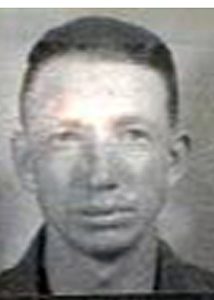
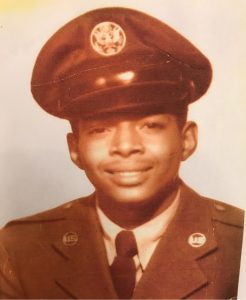 1″ completed its bombing run, it was hit in the right wing fuel tank, causing an explosion with a large amount of smoke. The damaged aircraft was flying under control but was losing altitude, and it eventually crashed on a mud flat near the island of Sinmi-Do. Initial searches that continued until October 26, failed to locate the missing Superfortress or its crew. On October 29, a United Nations Partisan Infantry Korea (UNPIK) team discovered the aircraft’s wreckage along with the remains of the radio operator and navigator, but the increasing enemy activity and the rising tide in the area prevented further recovery efforts that day. Returning the next day, UNPIK discovered that one set of these remains had washed away. However, the team collected another body, which they removed for temporary burial on the island of Oesun-Do. In early November 1951, the remains of a third body that was believed to be the radar operator washed ashore on Ho-Do where it was buried by UNPIK forces. Attempts to locate the Oesun-Do an Ho-Do burial sites or recovery of any of the other missing crew remains from the crash site, have been unsuccessful following the war. Private First Class Isreal Marshall Jr. entered the U.S. Air Force from Florida and was assigned to the 371st Bombardment Squadron, 307th Bombardment Wing. He was a radio operator aboard this Superfortress when it was lost. A partisan guerrilla unit reported to a United Nations Command (UNC) liaison that PFC Marshall died during this incident. It is probable that his remains were buried on the island of Oeson-Do, North Korea. He remains unaccounted-for. Today, Private First Class Marshall is memorialized on the Courts of the Missing at the National Memorial Cemetery of the Pacific.
1″ completed its bombing run, it was hit in the right wing fuel tank, causing an explosion with a large amount of smoke. The damaged aircraft was flying under control but was losing altitude, and it eventually crashed on a mud flat near the island of Sinmi-Do. Initial searches that continued until October 26, failed to locate the missing Superfortress or its crew. On October 29, a United Nations Partisan Infantry Korea (UNPIK) team discovered the aircraft’s wreckage along with the remains of the radio operator and navigator, but the increasing enemy activity and the rising tide in the area prevented further recovery efforts that day. Returning the next day, UNPIK discovered that one set of these remains had washed away. However, the team collected another body, which they removed for temporary burial on the island of Oesun-Do. In early November 1951, the remains of a third body that was believed to be the radar operator washed ashore on Ho-Do where it was buried by UNPIK forces. Attempts to locate the Oesun-Do an Ho-Do burial sites or recovery of any of the other missing crew remains from the crash site, have been unsuccessful following the war. Private First Class Isreal Marshall Jr. entered the U.S. Air Force from Florida and was assigned to the 371st Bombardment Squadron, 307th Bombardment Wing. He was a radio operator aboard this Superfortress when it was lost. A partisan guerrilla unit reported to a United Nations Command (UNC) liaison that PFC Marshall died during this incident. It is probable that his remains were buried on the island of Oeson-Do, North Korea. He remains unaccounted-for. Today, Private First Class Marshall is memorialized on the Courts of the Missing at the National Memorial Cemetery of the Pacific. 1″ completed its bombing run, it was hit in the right wing fuel tank, causing an explosion with a large amount of smoke. The damaged aircraft was flying under control but was losing altitude, and it eventually crashed on a mud flat near the island of Sinmi-Do. Initial searches that continued until October 26, failed to locate the missing Superfortress or its crew. On October 29, a United Nations Partisan Infantry Korea (UNPIK) team discovered the aircraft’s wreckage along with the remains of the radio operator and navigator, but the increasing enemy activity and the rising tide in the area prevented further recovery efforts that day. Returning the next day, UNPIK discovered that one set of these remains had washed away. However, the team collected another body, which they removed for temporary burial on the island of Oesun-Do. In early November 1951, the remains of a third body that was believed to be the radar operator washed ashore on Ho-Do where it was buried by UNPIK forces. Attempts to locate the Oesun-Do an Ho-Do burial sites or recovery of any of the other missing crew remains from the crash site, have been unsuccessful following the war. Staff Sergeant Ernest Robert McAdoo entered the U.S. Air Force from Pennsylvania and was assigned to the 371st Bombardment Squadron, 307th Bombardment Wing. He was a gunner aboard this Superfortress when it was lost. No returning POWs mentioned contact with SSgt McAdoo, nor was he seen at any known holding point, interrogation center, hospital, or permanent POW camp. Today, Staff Sergeant McAdoo is memorialized on the Courts of the Missing at the National Memorial Cemetery of the Pacific.
1″ completed its bombing run, it was hit in the right wing fuel tank, causing an explosion with a large amount of smoke. The damaged aircraft was flying under control but was losing altitude, and it eventually crashed on a mud flat near the island of Sinmi-Do. Initial searches that continued until October 26, failed to locate the missing Superfortress or its crew. On October 29, a United Nations Partisan Infantry Korea (UNPIK) team discovered the aircraft’s wreckage along with the remains of the radio operator and navigator, but the increasing enemy activity and the rising tide in the area prevented further recovery efforts that day. Returning the next day, UNPIK discovered that one set of these remains had washed away. However, the team collected another body, which they removed for temporary burial on the island of Oesun-Do. In early November 1951, the remains of a third body that was believed to be the radar operator washed ashore on Ho-Do where it was buried by UNPIK forces. Attempts to locate the Oesun-Do an Ho-Do burial sites or recovery of any of the other missing crew remains from the crash site, have been unsuccessful following the war. Staff Sergeant Ernest Robert McAdoo entered the U.S. Air Force from Pennsylvania and was assigned to the 371st Bombardment Squadron, 307th Bombardment Wing. He was a gunner aboard this Superfortress when it was lost. No returning POWs mentioned contact with SSgt McAdoo, nor was he seen at any known holding point, interrogation center, hospital, or permanent POW camp. Today, Staff Sergeant McAdoo is memorialized on the Courts of the Missing at the National Memorial Cemetery of the Pacific.